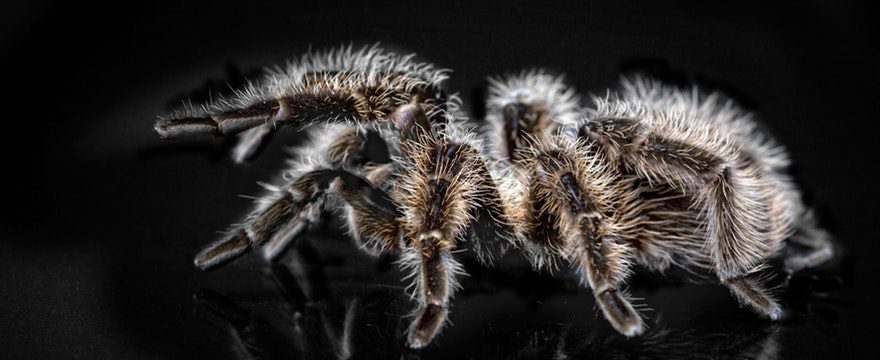Tarantula Care Sheet
Tarantula Care Sheet – This care sheet contains recommendations from our shop assistants.
Housing
Terrestrial
Ground dwelling species, the height of the enclosure is not required. Tarantulas need somewhere to retreat to during the day, hides such as leaves and bark should be placed inside. A shallow water dish should be placed on the cool end of the enclosure for large tarantulas.
Burrowers
The substrate should be deep enough for your spider to burrow. Burrowing species need space to build a web around the entrance of their burrow
Arboreal
Arboreal species, height will be more important than floor space. For these species, provide a shallow substrate on the floor with plenty of branches and artificial plants running toward the top of the enclosure.
Spiderlings
Spiderlings require smaller enclosures, we recommend small faunariums. This makes them easier to feed and maintain. You need to have a similar set-up as mentioned above. Spiderlings cannot use water dishes; therefore, their enclosures need light misting.
Feeding
Tarantulas feed on a variety of insects, including crickets, locusts, and mealworms. Some larger species of tarantulas will eat pinkies when adults. You will have to make the pinkie look alive by moving it in front of the tarantula using some large tweezers (never use your fingers)
Most tarantulas should be fed 3 – 6 crickets per week. Growing spiderlings require more food.
If any live food is not eaten, it should be removed to prevent the spider from getting bitten.
Tarantula Bites
If a tarantula bites you, please call 111 or seek medical advice straight away.
Flick’s Hair
Only certain species of tarantulas flick their hair, caution should be taken not to let it get into your eyes. If you have sensitive skin this can cause irritation and a rash that may last up to several days. If hair does go into your eyes or you start experiencing skin problems, please seek medical advice.
Moulting
When tarantulas moult, they shed their exoskeleton and emerge in a new one. Before this happens, bald spots, particularly on the abdomen (which may also grow large), turn dark, and feeding stops. They also move little, bury themselves, and spin a ‘moulting mat’ web. Don’t touch a tarantula during pre-moult or moulting, they also won’t need food.
Arboreal tarantulas generally moult more often than terrestrial species. Spiderlings can be expected to moult around six times in the first year, with the pre-moult period increasing until reaching maturity.
For any further information or advice please feel free to message us on Facebook or contact the store on 01902 494860




